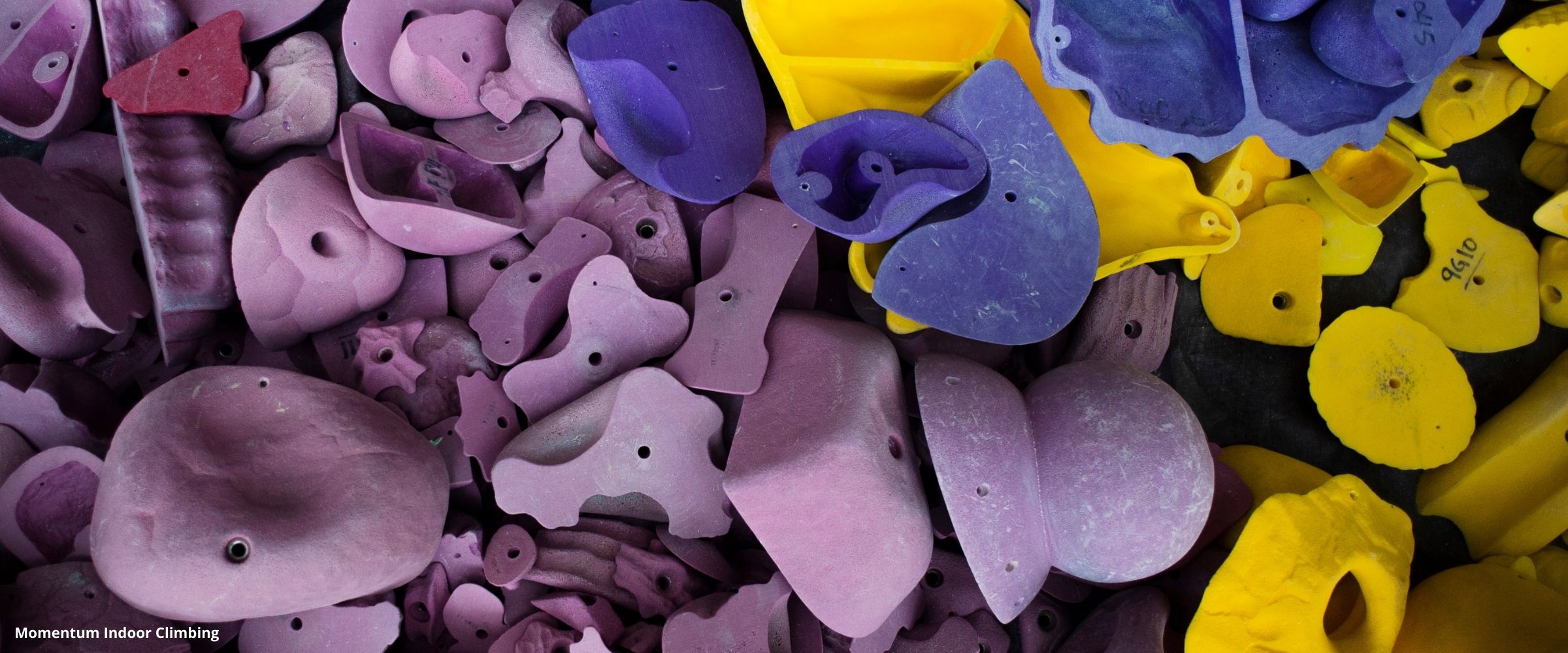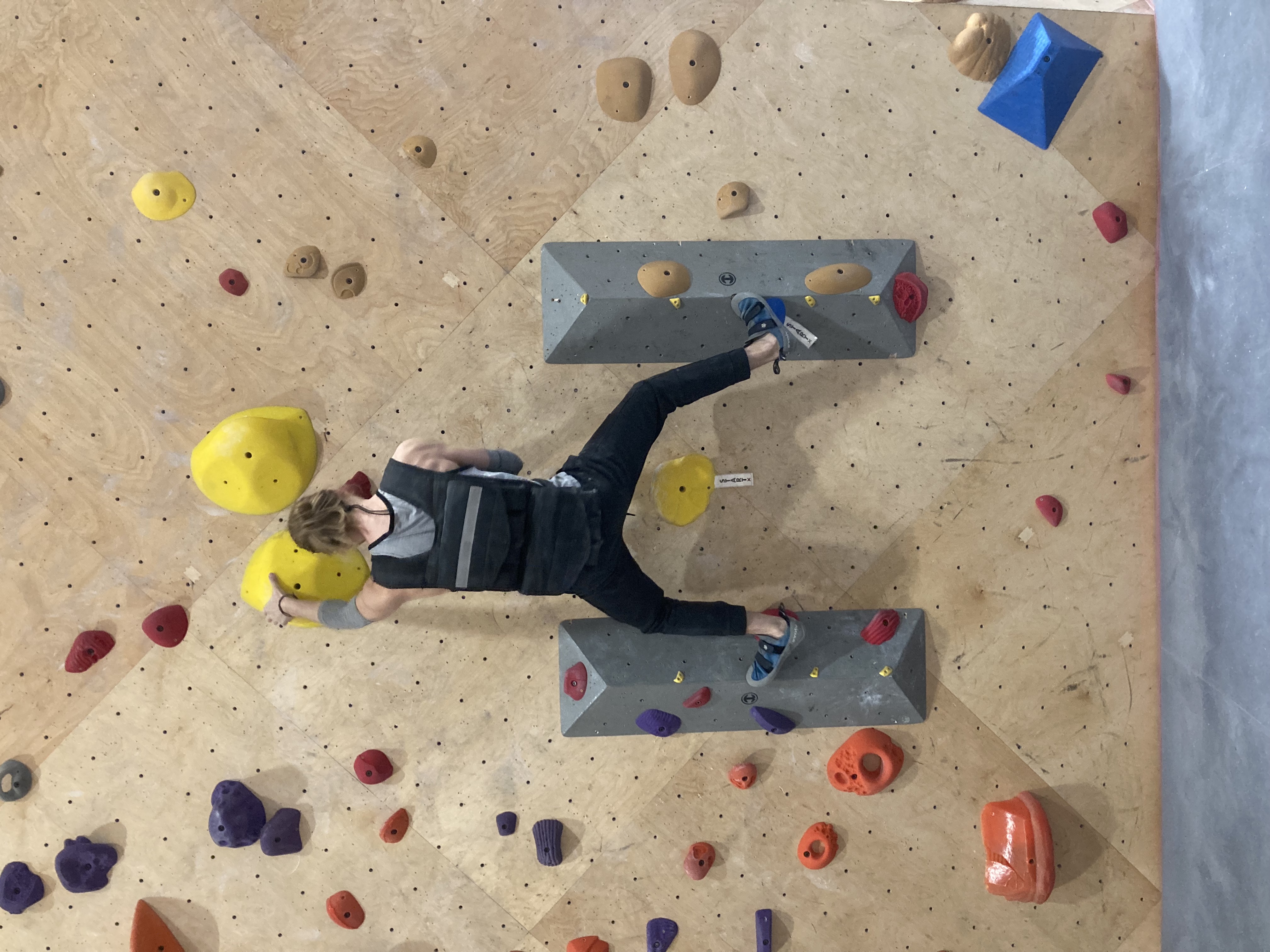(Route)setting Good Standards: Create More Empathy in Your Routesetting

If you’ve ever set with me, you know I talk a lot about feelings. Initially, I try to express how the route feels to me. Then I go through a long process to imagine how the route feels for someone who is way taller than me. Then shorter than me. Then heavier than me. Or someone who is climbing for the very first time and is super psyched. Or someone who has been climbing for 15 years but is having a bad day.
Not only is it fun to imagine climbing in a different body than your own, but it actually makes you a better routesetter. In competitive setting, empathy can even be the superpower you bring to the crew. For commercial setting, it is important to keep in check that people who are climbing your routes are not going to have the same body type or abilities as you.
Here are five resources and ideas exploring how to ensure your sets cater to diverse populations and celebrate all types of climbers in your gym community.
 |
|
A screengrab from Tonde's talk on Athletic Empathy, hosted by KAYA. |
1. Athletic Empathy
KAYA released this discussion featuring Tonde Katiyo during the shutdown; which provided many setters an opportunity to start reframing their ideas of what they wanted to bring to routesetting once gyms were safe to reopen. Tonde emphasizes that learning a new skill is not just about the physical aspect of doing the skill or the mental capacity to remember the skill but understanding and valuing the emotional experience. Regularly talking about how a set will potentially feel for various types and sizes of climbers gets you in the habit of considering someone else's climbing experience and hopefully informs your tweaks.
2. This Post by Bigger and Boulder
There are routesetters who set screw every single hold, every single set. And there are setters who set screw the macros but risk it on holds that are unlikely to move. Reading about Diane’s experience (as well as seeing the video of the hold violently spinning causing her to fall) made me reconsider how lax I had previously been on set screwing.
How can I claim that safety is one of my team’s core values if I am not considering how my lack of set screwing is influencing how someone else feels about their own safety? Climbing is inherently risky but make a commitment to make all of your members feel that the holds are stationary regardless of how light or heavy a climber is.
3. Girls Just Wanna Have Fun (on the projects you intentionally set for them)
Whenever there is a #slaydie in my gym who is feeling down, I send them this video from REI.
As a routesetter, there are several things you can do to make women feel like they are represented in your setting. In my experience, one of the most simple and valuable things I’ve done is observe someone’s skillset, create a boulder that is not in that skill set, and actually approach them to say that I set a boulder specifically for them because I want them to learn something new. I purposefully leave out grade and instead focus on the move type. Women want to feel like we are being considered in what goes up on the wall. There is nothing more defeating than getting on a brand new set that lacks diverse movement and fits a singular (usually tall) body type.
Additionally, having women-specific programming can go a long way. If you have women in your gym interested in setting, host a clinic! If you overhear several women wanting to learn how to hangboard, host a clinic! If women in your gym are psyched about competing, host a women's only comp.
Lastly, add push feet. For a lot of us, they are critical. It is such a quick setting tweak that can make a HUGE difference in a climber’s success on the route.
 |
|
Routesetter Jacob Hoppe foreruns while wearing rental shoes and a weighted vest to better understand how the sets feel for a different-sized climber or a newer climber. |
4. Change Up Your Forerunning
If you’re forerunning as a new climber, don’t just imagine how their body is climbing. Throw on some poor fitting rental shoes and actually feel what those foot holds are like in contrast to your perfect fitting shoes with your intended foot beta. Forerunning climbs in a weight vest can also be helpful to imagine how routes feel for a bigger body, especially in steeper terrain.
Circling back to empathy, I frequently shout at my team when they're on the wall “what would you do here if you were freaking out?” Imagining someone’s emotional state can help inform where additional down climb jugs are needed for bailing off a route and can be a good opportunity to test fall zones.
5. Balancing Different Needs
Each day we are faced with the choice to set a style that caters to one type of climber over another. We know it's impossible to create a set that makes every climber happy, but a lot of us still try.
In this Power Company Podcast, Andy Leung discusses what it's like to set for two drastically different gym populations, ways for introducing new movement, and what the role of the routesetter is as a teacher.
How far do we want to go to aid or inhibit success on a route? How do we cater toward the climbers who primarily climb outside and use the gym for training purposes while still having enough commercial quality sets up for the masses? How can we as routesetters better address our OWN weaknesses in order to help our members address theirs?
As we transition into the New Year’s resolution season, every gym will see an increase in brand new climbers looking to form a habit as well as established members interested in creating new climbing-related goals. Increasing your personal awareness (and team conversations) on who exactly you’re setting for, how a set functions for various body types, and what a set demands from the climber emotionally instead of just how it functions physically will not only make you a more considerate routesetter, but will foster a better, safer, and more inclusive gym community at large.
For more routesetting advice from Hayley Moran, check out the full (Route)Setting Good Standards series!
About the Author
 Hayley Moran is the Head Routesetter at The Crag in Nashville, Tennessee. She has a Master’s Degree in Child and Family Studies and previously worked in the field of public health with a focus on health equity. She uses those experiences to help guide her work in the climbing industry by creating events and discussions that promote diversity, equity, and inclusion through the sport of rock climbing. When she is not on the wall, you can find Hayley baking in the kitchen, designing silly sweatshirts, or hanging out with her cat, Goblin.
Hayley Moran is the Head Routesetter at The Crag in Nashville, Tennessee. She has a Master’s Degree in Child and Family Studies and previously worked in the field of public health with a focus on health equity. She uses those experiences to help guide her work in the climbing industry by creating events and discussions that promote diversity, equity, and inclusion through the sport of rock climbing. When she is not on the wall, you can find Hayley baking in the kitchen, designing silly sweatshirts, or hanging out with her cat, Goblin.
